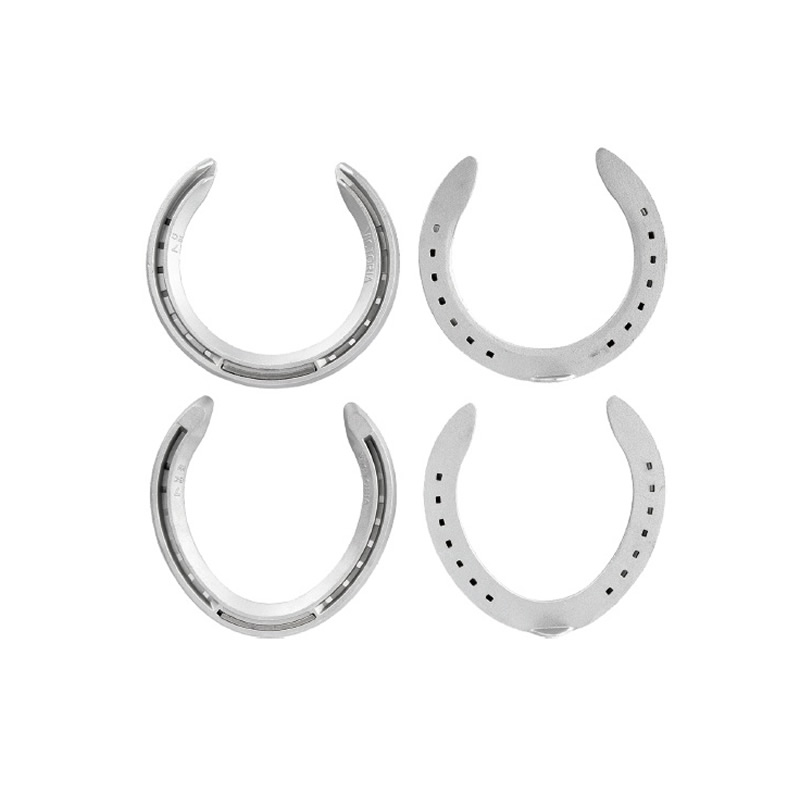- 05
- Jun
Horse Shoes: The Perfect Companion for Equine Hoof Protection

Horse shoes, also known as horseshoes, have been an integral part of equestrian culture for centuries. These U-shaped metal devices are designed to provide protection and support to horses’ hooves, allowing them to perform at their best while minimizing the risk of injuries. In this article, we will explore the advantages of horse shoes and provide some essential tips for their proper use.
One of the primary benefits of horse shoes is their ability to safeguard a horse’s hooves against wear and tear. Horses are active animals, and their hooves endure significant stress and strain during various activities, such as jumping, racing, or pulling heavy loads. The metal construction of horse shoes acts as a protective barrier, shielding the hooves from excessive friction and impact. This feature greatly reduces the risk of hoof cracks, chips, and other injuries, ensuring the horse’s soundness and well-being.
Furthermore, horse shoes offer improved traction on different types of terrain. Horses often traverse challenging landscapes, including slippery surfaces, uneven ground, and rocky terrains. The addition of horse shoes enhances the horse’s grip and stability, preventing slips and falls that could result in serious injuries to both the horse and its rider. Whether it’s a competitive event or a leisurely trail ride, the reliable traction provided by horse shoes enhances the horse’s performance and safety.
When using horse shoes, it is crucial to ensure a proper fit. Ill-fitting shoes can lead to discomfort, lameness, and even long-term damage to the hooves. Regular visits from a professional farrier are essential to assess the horse’s hoof condition, trim the hooves if necessary, and fit the appropriate shoes. It is essential to remember that each horse is unique, and the choice of shoe should be tailored to its specific needs, taking into account factors such as breed, size, conformation, and intended use.
Additionally, regular maintenance of horse shoes is vital to ensure their effectiveness and longevity. The shoes should be inspected and cleaned regularly to remove any debris or dirt that may accumulate, as these can cause discomfort and compromise the shoe’s fit. Furthermore, the farrier should check for signs of wear or damage and replace the shoes when necessary. A well-maintained set of horse shoes not only enhances the horse’s performance but also prevents potential hoof problems.
Despite the numerous benefits of horse shoes, there are a few considerations to keep in mind. First and foremost, horse shoes should never be applied without the assistance of a trained farrier. Attempting to shoe a horse without proper knowledge and experience can lead to serious injuries and long-term damage. It is important to rely on professionals who possess the expertise and understanding of equine hoof care.
Additionally, it is essential to provide horses with regular hoof care even if they wear shoes. Regular trimming and maintenance help promote healthy hoof growth and prevent common issues such as overgrown hooves or imbalances. A balanced diet and proper nutrition are also crucial for maintaining strong and resilient hooves.
In conclusion, horse shoes, or horseshoes, are a valuable tool in equine hoof care. They offer protection, traction, and stability, ensuring the horse’s well-being and performance. However, it is vital to seek professional assistance in fitting and maintaining horse shoes to ensure the horse’s comfort and hoof health. By understanding the advantages and following the necessary precautions, horse owners can provide their equine companions with optimal hoof protection and support.
horseshoe, horse shoe, horseshoes, horse shoes, steel horseshoes, surefit xtra,
spider plates, sliding plates, horseshoes game, heart bar shoes, horse shoes bulk,
leg saver plates, heavy horse shoes, horse shoes drawing, types of horse shoes,
equestrian horseshoes, natural balance shoes, natural balance horse shoes,
horseshoeing tutorial
